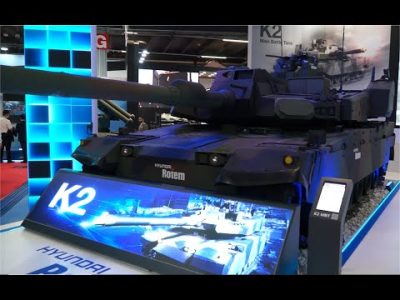Published on 01/21/2021 – Last Updated on 01/21/2021 by OTC
By Emil McHarsky, Lawyer, Academic and contributor at Spectrum Legal Consulting Law Blog. Legal, Software and Defence Industries.
In his New Year´s address, the President of France, Emmanuel Macron, said: “Let’s prepare now for this spring of 2021 which will be the start of a new French morning, of a European renaissance”. Besides what is perhaps to be interpreted as an upbeat and hopeful tone in the context of a torrid year for France, the EU and the world, anyone vaguely familiar with Emmanuel Macron might have read certain geo-political aspirations into this line as well. To say the least, President Macron has demonstrated interest in strengthening both France and the EU´s roles in world affairs, often through military means (such as, for instance, notable French military activity in Mali and air strikes in Syria). In the context of Brexit and the leaving of an EU heavyweight in the face of the UK, Macron´s tying of France and Europe´s futures does not seem coincidental; rather, one might expect France under Macron to lean into a more active role both within the EU and globally. Given that Macron is one of the EU´s two chief (unofficial) leaders, his words bear watching.

The geo-political ramifications of a more activist France and EU are far too complex and important to be dealt with in a single article of any sort, however it does not escape notice that a more activist France and EU driven by Macron (rather, than, for instance, a Merkel driven EU) would likely have a more military flavour. This article seeks to explore only one question in that context – is the EU (and indeed France) adequately armed for any potential more expansive posture. The focus here will be on EU navies, since the navy is arguably the most straight forward tool of foreign intervention and aggressive foreign policy (avoiding, as it does, the need for forward basing of aircraft or land units).
Bearing the above in mind, a quick run through stats for EU navies in some particular fields suggests that EU navies are broadly speaking, woefully underequipped for an expeditionary or intervention role, let alone any form of peer to peer conflict away from EU waters (should such a conflict ever arise as a result of more forceful foreign policy steps).

EU navies (particularly leading EU navies such as France, Italy, Spain, Germany and the Netherlands) are equipped with top of the line sensors and weapons systems, which can easily compete with leading international analogues. For instance, EU naval radars such as Kronos Grand Naval/Kronos Dual Band, Thales Sea Fire 500, Thales Nederland APAR/APAR Blk 2 and SMART-L, Hensoldt TRS4D to name a few, compare well against the likes of US, Russian, Chinese and Japanese alternatives, such as the Lockheed Martin AN/SPY-1D 3D (also equipping Spain´s Alvaro de Bazan class frigates), Japan´s FCS-3A or China´s Type 346 (Dragon Eye) radar systems, in terms of range and technology used (e.g. AESA, GaN).

Furthermore, Europe is arguably the world leader in naval stealth, with designs such as France´s La Fayette, Gowind class, Germany´s MEKO A200, Sweden´s Visby class, the French designed Formidable Class, as well as the French/Italian Horizon/ Orizzonte and Aquitaine/Bergamini class vessels, all set the bar for naval stealth, with perhaps only Japan´s recent 30DX/30FFM Frigate and the US Zumwalt class Destroyer being up to the EU standard. Honorable mentions should be made to EU advances in non-nuclear submarine propulsion such as the Swedish Sterling engines, German PEM Compressed Hydrogen Fuel cells, or Spain´s innovative bio-ethanol processor/fuel cell solution, which all contribute to top of the range, silent, conventional submarines.

So what, then, is the problem? The current analysis will focus on one aspect – firepower. Clearly, EU naval assets are exceedingly well equipped across the board. However, they appear inexplicably let down by one comparatively simple aspect of military shipbuilding – namely, how much ordnance they bring to a fight. Modern warships do battle in an Anti-Air, Land Attack, Anti-Ship, and Anti-Submarine capacity. EU warships, arguably, are notably under armed in the first three capacities and especially in the first two. This is important, because any aggressive stance taken by EU member states which require the use of naval assets abroad, will require 1) the ability to project power (Land Attack) and 2) the ability to protect from retaliation (Anti-Air, Anti-Ship, and Anti-Submarine). Anti-Air and long-range Land-Attack missiles are generally stored on ships in Vertical Launching Systems (VLS). The number of VLS cells generally indicates the number of missiles a ship is able to launch, except that US-made ESSM missiles can be quad packed into one VLS cell, which is also true of the MBDA (EU) CAMM/Sea Ceptor missile and the South Korean made K-SAAM missile.
With the above in mind, consider the below table comparing VLS loadouts of (modern) EU and peer nation Frigate and Destroyer class ships:

** Table based on publically available data and may be subject to modification/correction
The above comparison table demonstrates that by and large, EU navies tend to field warships with fewer VLS cells than peer level navies and where a ship class with a large number of VLS cells is fielded, the ship class is usually itself small. Within the EU, only Spain and the Netherlands field a sizeable class of ships with over 32 VLS cells (until recently, the UK could have been added to this number). While France and Italy field such ships (in the form of the Horizon/Orrizonte class), they have fielded a total of 4 of those ships between them, one less than Spain´s Álvaro de Bazán class. While both the French and Italian navies are ultimately larger than Spain´s, they are filled with comparatively under armed vessels (especially the Italian navy which seems to be standardising around a 16 cell VLS configuration).
Clearly, these are facts which will not be unknown to the militaries of each country involved and there may well be legitimate reasons why this level of ordnance is deemed to be sufficient. As at least this author is not aware of the rationale, all that is left is to ask questions in the hope of getting answers. Questions such as:
1. Why are EU ships so under armed when compared to peer nations?
2. If a low VLS count (i.e. 16 VLS cells) is indeed sufficient, why do other navies field ships with higher VLS numbers (even within the EU)?
3. If a low VLS count is deemed sufficient, what is it deemed sufficient for?
In other words, what any commentators (and indeed, EU citizens as a whole perhaps) ought to ask is, whether EU navies are being armed to cash the cheques which the EU´s potential ambitions might write (this, especially in the context of not just President Macron´s latest speech, but the general recent trends towards a “militarization” of the EU, such as through greater discussions around an EU army and greater focus on joint military programs).
At first glance, the answer to that question seems to be that it is doubtful. Let´s consider the following. A modern ship uses missiles contained in its VLS cells to defend itself from attack, as well as to attack. When it comes to defending against attacking aircraft, even if we assume a 1 missile 1 kill scenario (which is ambitious), a ship equipped with 16 VLS cells will be able to take down a maximum of 16 attacking aircraft. That number is however inaccurate, since the ship would need its missiles to defend against incoming missiles launched by enemy aircraft, enemy ships, enemy submarines or enemy coastal defence batteries. In such a combined attack situation, even a ship equipped with quad packed ESSM or CAMM missiles, may well find itself quickly overwhelmed simply trying to defend itself, if it is relying solely on a 16 cell VLS configuration. This is to say nothing about also attempting to provide cover for allied ships or to carry out land attack functions (which would take up precious VLS cell slots).

EU navies clearly understand the need for larger arsenals, otherwise the Horizon and Álvaro de Bazán classes would not exist. This however, raises the question, why then are EU vessels habitually under armed and for what missions is this level of ordnance deemed acceptable? As evidenced by the theoretical scenario above, a single EU ship armed at the 16 VLS level (which is very common), would be quickly overwhelmed by a dedicated missile attack if acting alone and would also be unable to “project power” for the same reason. This would only be otherwise if facing an opponent which is itself under armed and generally far from “peer” level. Arguably a 32 cell VLS solution would be better in terms of self-defence, but not sufficiently better in terms of power projection.
To a certain degree, what is being observed here may be an expression of a peace dividend – unlike the EU, other nations listed in the table above generally have to contend with potentially aggressive neighbours with large navies such as China (in the case of Japan, South Korea and Australia) or themselves adopt an arguably aggressive foreign policy (USA and China), neither of which applies to the EU currently. The EU´s most obvious strategic adversary is Russia, however the EU´s surface naval forces are arguably the least relevant major military branch in a potential confrontation with Russia, due to geographical factors among others.

This point has a flip side however – nations which need to seriously consider having their vessels in harm’s way, have armed them to a much higher degree than the EU´s leading naval powers have generally armed their ships. Looking at the table above, one can observe absurdities such as that a single South Korean Sejong the Great-class ship can bring more missiles to bear than: The entire German Brandenburg/Sachsen/MKS180 classes separately or the entire French Horizon/Italian Orrizonte Class and perhaps more absurdly, two Sejong the Great-class ships can bring as many missiles to bear as the entire list of modern Germany navy warships or the entire French FREMM class. While some disparities may be to be expected, this is a level of disparity which should give us pause. Similarly, it should be noted that the Japan Maritime Self Defence Force is comparable in size (in terms of major combatants) to the ships fielded by all the leading EU navies combined (50 for Japan vs 77 for the EU). China´s navy, it should be noted, is bigger by itself (89), to say nothing of the US navy (134). This goes to say that not only are EU ships under armed, in the grand scheme of things, they are also comparatively few in number, which in turn makes the fact they are arguably under armed all the more concerning.

Of course, high intensity warfare involving EU ships is happily still a hypothetical scenario. However, given current trends it is something which should be considered. What is more, naval forces are exceedingly expensive to build and maintain, so taxpayers ought to have in mind whether their money is being to some degree wasted on ships which are not entirely fit for all relevant purposes. In the context of a Trump and post Trump USA, an emerging and assertive China, as well as the inevitable post Covid financial crisis, it is safe to say we are entering turbulent times. In that context, it is notable that the ordnance level of most EU ships does not appear to be geared towards confronting peer level opposition or independent power projection. Rather, the underlying rationale appears to be that EU ships would in any event be participating in US led or US supported operations or, presumably would be deploying against targets which border on the defenceless (such as Syria or Libya). Even a joint EU only naval force would arguably face difficulties against a well-equipped and determined opponent, let alone attempting to impose itself against a peer level force. This would not be a particular problem, if EU leaders had not been alluding to a more Geo-politically assertive EU. If that is to be the EU´s future, it is time to consider whether the EU´s naval forces will eventually find themselves in the “knife to a gunfight” situation and if they do – is this really good enough?
Emil McHarsky:
LinkedIn: https://www.linkedin.com/in/emilmcharsky/
Twitter: https://twitter.com/EMcharsky
Spectrum´s:
Website: www.spectrumlegalconsulting.co.uk
LinkedIn: https://www.linkedin.com/company/spectrum-legal-consulting/?viewAsMember=true
Twitter: https://twitter.com/legalspectrum
The post Bringing a knife to a gunfight – are European Navies underarmed for peer to peer conflict and power projection? appeared first on Naval News.














Comments